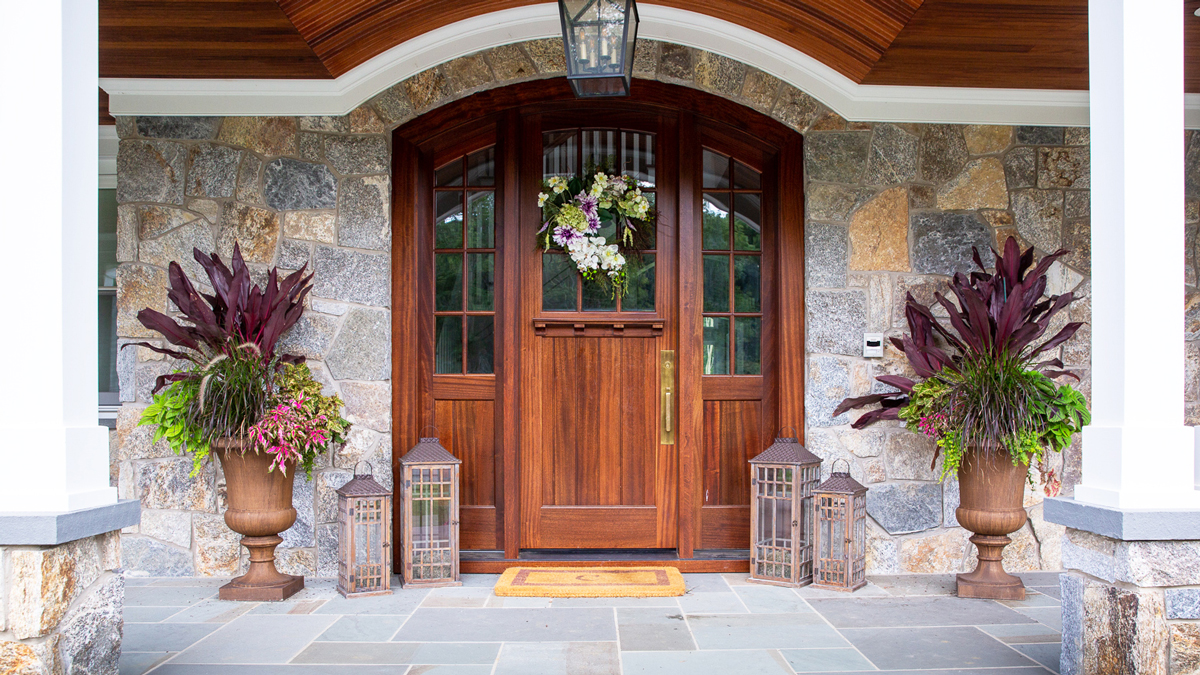
Your home’s entry door is a vital element in your property’s curb appeal and security. You might choose a country door for your entry door. What kind of wood would be best? When choosing the best wood for your entry door, several factors come into play, including aesthetics, durability, climate, and maintenance. This article will delve into the top wood options for entry doors, helping you make an informed decision to enhance your home’s charm and functionality.
Wooden entry doors offer timeless beauty and warmth, making them a popular choice among homeowners. The choice of wood, however, can greatly impact the door’s overall performance and longevity. Here are some of the top wood species often used for entry doors:
- Mahogany:
- Appearance: Mahogany is renowned for its rich, reddish-brown color and distinctive grain patterns, providing an elegant and sophisticated look to your entryway.
- Durability: It is exceptionally durable, with natural resistance to decay, pests, and weather, making it a great choice for exterior doors.
- Maintenance: Mahogany requires regular maintenance to preserve its appearance, including periodic staining or varnishing.
- Oak:
- Appearance: Oak offers a traditional, classic look with a warm, golden hue and prominent grain patterns.
- Durability: It is sturdy and known for its resilience, standing up well to harsh weather conditions.
- Maintenance: Oak is low-maintenance, typically requiring periodic refinishing to maintain its appearance.
- Cherry:
- Appearance: Cherry wood boasts a warm, reddish-brown tone that darkens with age, providing a rich and inviting appearance.
- Durability: While not as hard as some other woods, cherry is still reasonably durable and can last for many years with proper care.
- Maintenance: Regular maintenance is necessary to preserve cherry wood’s color and sheen.
- Maple:
- Appearance: Maple wood offers a light, creamy color with subtle grain patterns, providing a clean and contemporary look.
- Durability: Although not as dense as some hardwoods, maple is still a durable option for entry doors, especially when properly finished and maintained.
- Maintenance: Regular sealing or finishing is essential to protect and enhance the maple’s appearance.
- Alder:
- Appearance: Alder has a lighter, reddish-brown color with a straight grain, giving it a rustic and charming aesthetic.
- Durability: While not as durable as some other hardwoods, alder can be suitable for entry doors, particularly when used in a protected environment.
- Maintenance: Regular maintenance is necessary to prevent weather-related damage.
- Teak:
- Appearance: Teak wood is known for its golden-brown color and distinct grain patterns, offering an exotic and luxurious appearance.
- Durability: Teak is highly durable and naturally resistant to moisture, pests, and decay, making it an excellent choice for exterior doors.
- Maintenance: Teak requires minimal maintenance, typically just oiling or sealing to maintain its appearance.
When selecting the best wood for your entry door, consider the climate in your area. The weather conditions can greatly affect the performance and lifespan of the door. For areas with extreme temperature variations, exposure to sunlight, or high humidity, a highly durable wood like teak or mahogany might be the best choice. In more temperate climates, oak, cherry, or maple can be suitable options.
Furthermore, you should think about your preferred level of maintenance. Some woods, like teak and oak, require less maintenance due to their natural durability and resistance to the elements. Others, like mahogany and cherry, will need regular care to retain their appearance.
To ensure your wood entry door maintains its beauty and functionality over the years, follow these maintenance tips:
- Regular Cleaning: Clean your door with a mild detergent and water to remove dirt and grime. Avoid harsh chemicals that can damage the finish.
- Sealing and Finishing: Apply a quality sealant or finish to protect the wood from moisture and UV rays. Follow the manufacturer’s instructions for the best results.
- Routine Inspection: Periodically inspect your door for signs of wear, such as cracks, peeling finish, or rot. Address any issues promptly to prevent further damage.
- Hardware Maintenance: Check and lubricate the hinges, handles, and locks to ensure smooth operation and security.
- Repairs: If you notice any damage, such as scratches or dents, consider refinishing or repairing the affected area to maintain the door’s overall appearance.
In conclusion, choosing the best wood for your entry door is a significant decision that affects your home’s appearance, security, and maintenance requirements. The choice of wood should align with your climate, personal preferences, and willingness to maintain the door over time. Whether you opt for the timeless elegance of mahogany, the classic charm of oak, or the exotic beauty of teak, a well-maintained wooden entry door can enhance your home’s curb appeal and provide a warm welcome for years to come.